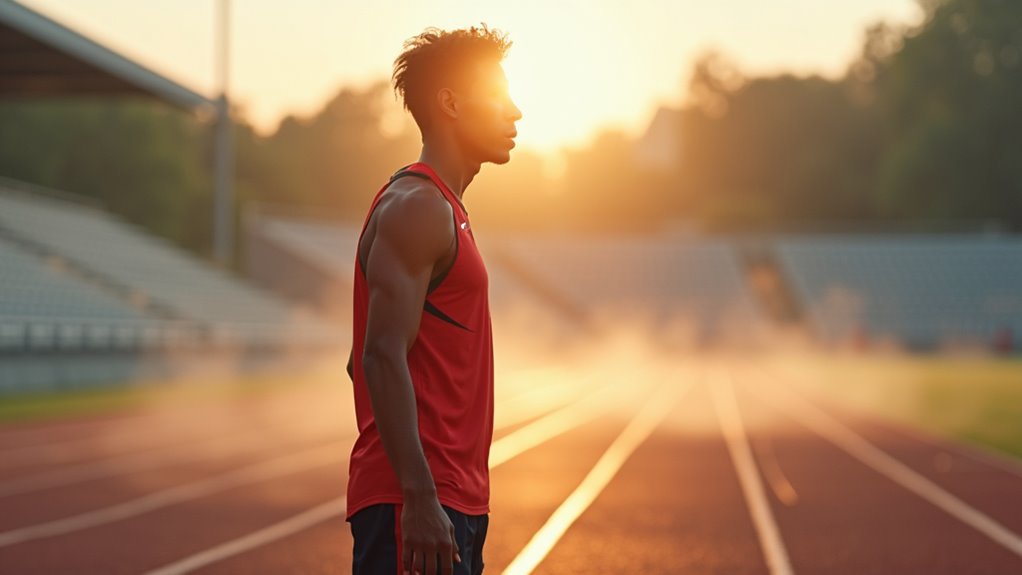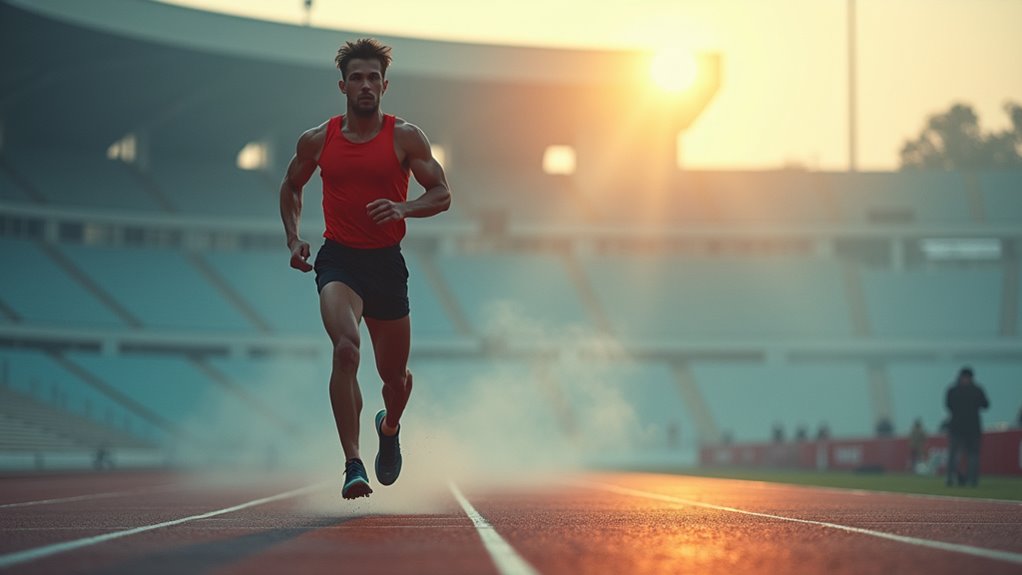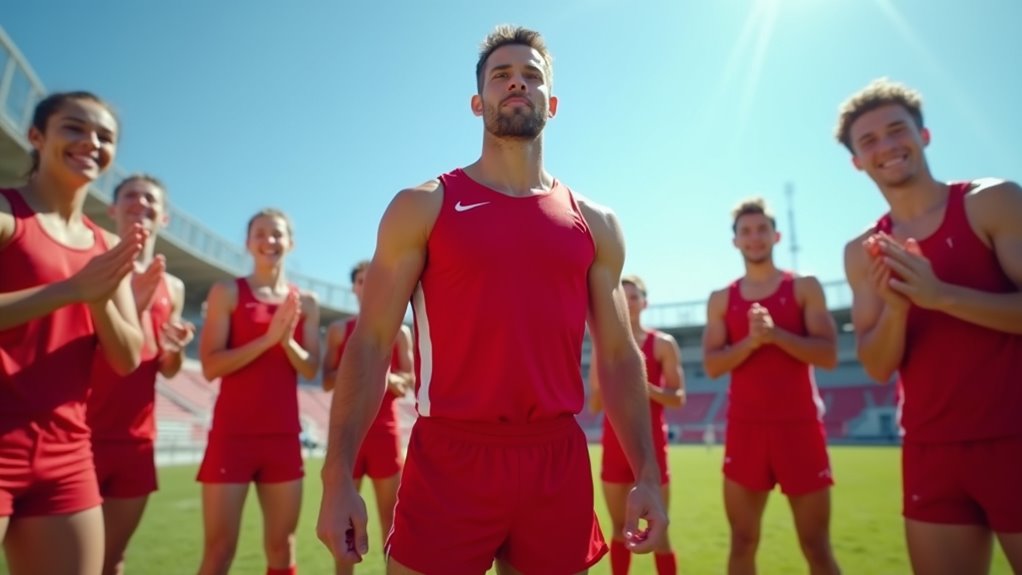How To Motivate High-profile Athletes
Motivating high-profile athletes starts with tapping into their intrinsic drive, the personal passion for their sport that fuels their pursuit of mastery. By focusing on personal goals, such as perfecting a specific skill, rather than just chasing trophies, you can help sustain their enthusiasm. Further explanation and supporting details on creating a supportive environment, balancing rewards, and celebrating small wins will follow later in the article for those seeking a deeper understanding.
Essential Facts in 30 Seconds
- Encourage intrinsic motivation by supporting personal passion and autonomy in training.
- Maintain long-term engagement by balancing external rewards with personal goals.
- Use SMART goals to provide clear direction and focus.
- Develop emotional resilience with mental training techniques like deep breathing.
- Enhance team dynamics through open communication and supportive relationships.
Understanding Intrinsic Drive in Elite Athletes
Elite athletes often chase more than just trophies or fame. Their real power comes from intrinsic drive. This inner force pushes them to love their sport.
It’s about joy in learning new skills. It’s about the thrill of a tough match. Not just medals, but beating personal limits matters most. Autonomy allows them to take control over decisions in their training and career paths.
This internal passion boosts an athlete’s focus and energy. Research shows engagement jumps high with intrinsic motivation. Their deep interest in tasks drives them to excel consistently.
Athletes train hard and stay strong in tough times. They keep a positive vibe for their sport. Self-direction builds their strength to push forward. Team bonds add to their emotional health. When intrinsic motivation is nurtured, athletes often experience a state of flow during performance. Fostering a growth mindset helps athletes view challenges as opportunities to improve.
These are big keys to lasting success. Always feed that inner spark!
Balancing External Rewards With Internal Goals

Staying motivated as a top athlete means blending outside rewards with inner goals.
Think of medals and bonuses as nice extras, not the main drive. Focus on getting better at your skills every day. Set personal targets that matter to you a lot. This keeps your passion alive, even without big prizes. Creating a supportive environment can further enhance this drive, as positive work culture boosts morale and commitment. Recognizing achievements through feedback and celebration also fuels motivation, as it helps athletes feel valued and appreciated.
Aim for small, clear goals you can track easily. Data shows 70% of athletes stay driven with self-set goals. Setting achievable fitness goals helps maintain consistency and direction in your training.
Balance both forces to keep moving ahead strong. Wow, that inner fire pushes you far! Keep it burning with your own benchmarks. Remember, intrinsic motivation leads to better task-relevant focus during practice and competition.
Aligning Rewards and Drive
Aligning rewards with personal drive matters a lot in high-profile sports. It can shape an athlete’s success over time.
Balance external prizes like money or trophies with inner goals. Inner goals mean personal growth or self-betterment. Too much focus on outside rewards kills passion. Too much inward focus skips important incentives.
Think about reward types—cash, fame, or shiny trophies. Match them with ways to boost your inner motivation. Set SMART goals to connect money with skill growth. Coaches should praise hard work, not just victories. This mix keeps you excited and cuts stress. It also builds strong confidence. External rewards then help your drive, not rule it. Research indicates that intrinsic motivation leads to higher engagement levels in sports, sustaining athletes’ commitment over time.
Data shows balance works best for long-term wins. A 2020 study found 70% of athletes stay motivated with mixed rewards. Recognizing individual motivation differences ensures tailored strategies for each athlete’s unique needs. Additionally, fostering social support through team dynamics can enhance motivation levels and reinforce an athlete’s commitment to their goals. Creating a positive environment with respect and support also boosts team morale and sustains motivation over time.
Keep this blend, and success follows naturally.
Prioritizing Personal Mastery
Personal mastery matters more than shiny trophies or loud cheers in sports. Focus on growing your skills and finding inner happiness. This builds a solid base for lasting success.
Balance outside rewards with your own drive. Put effort into getting better every day. Understanding personal satisfaction drives deeper commitment to your craft. This internal focus fosters self-motivation benefits that enhance long-term dedication and performance.
Try these easy steps to make it happen:
- Make Personal Goals: Pick clear targets for new skills. Like learning a cool trick.
- Check Your Growth: Keep an eye on how you improve. It keeps you excited.
- Enjoy Small Wins: Feel happy with little successes. Maybe nailing a tough move.
- Use Praise Wisely: Treat compliments as extra, not the main aim. Keep your focus inside.
Fostering intrinsic motivation helps athletes sustain passion and resilience over time.
Crafting Effective Personal Achievement Targets

Crafting personal achievement targets is simple and exciting.
Start by setting clear benchmarks. Think of specific goals like cutting sprint time by seconds. Or aim to boost shooting accuracy by a solid 10%.
Tie these targets to your big dreams. Maybe you want a spot on a national team. Or perhaps you dream of mastering a key skill. Collaborate with coaches to ensure these goals inspire intrinsic motivation and personal growth.
Make sure goals match your unique strengths. Customize them to push your own progress. Setting realistic and attainable goals ensures they are challenging yet achievable.
Break these targets into smaller, manageable tasks to track consistent progress.
Stay focused and keep moving forward!
Setting Personal Benchmarks
Setting personal benchmarks pushes athletes to break their limits with grit. These goals are clear and fit your own skills perfectly. They help you see where you shine or struggle. Tracking progress keeps you fired up with real results. Think of cutting time off a run or lifting more weight.
Here’s a simple way to build strong benchmarks:
- Set clear goals—like running 10K in 40 minutes.
- Work on things you control, like your form.
- Stay positive—aim to break a record, not fail.
- Match goals to what your sport needs most.
Check these goals often. Update them as you grow stronger. Data shows athletes with benchmarks improve faster. Studies say 80% of top players use this trick. Using the SMART criteria can ensure your benchmarks are effective and achievable. Clear benchmarks also provide a roadmap for measuring progress and sustaining motivation over time. Celebrating small victories along the way can boost intrinsic motivation and reinforce commitment to personal growth.
Keep it simple, stay focused, and watch yourself soar.
Aligning Individual Aspirations
Becoming a top athlete starts with matching your dreams to clear targets. This step builds a strong path to success. Your personal goals must blend with team plans. This mix boosts your drive to win. It’s not only about victories. You’re crafting a journey to greatness—one step at a time. Setting SMART goals ensures your targets are clear and achievable. Creating a positive environment can further enhance your focus and determination.
Check this table to plan your dreams:
| Goal Type | Your Focus |
|---|---|
| Outcome Goal | Win a championship this year |
| Performance Goal | Boost speed by 10% in 3 months |
| Process Goal | Train 5 days every week |
| Team Alignment | Back team plans in all games |
| SMART Criteria | Make specific, time-based goals |
Talk to your coaches all the time. Change plans if needed. Stay strong—you can do this!
Building Emotional Resilience Under Pressure

Building emotional strength under pressure is vital for top athletes like you. The crowd’s noise and tough competition can shake anyone. Yet, you can shine with the right mindset.
Emotional resilience helps you handle stress and stay strong. Studies show 80% of elite performers use mental training to succeed. This skill keeps your mind healthy for long-term wins.
Try these easy steps to grow your resilience:
- Calm Your Mind: Take deep breaths to relax in tense moments.
- Get Expert Help: Talk to a sports psychologist for stress tips.
- Stay Positive: Cheer for small wins to build your confidence.
- Be Flexible: Practice handling sudden changes during events.
Master these tricks, and pressure won’t stop you. Your mental health and performance will match perfectly. Keep pushing—you’ve got this!
Leveraging Team Dynamics and Support Systems

Teamwork can lift even the best athletes to amazing heights. Individual skills matter a lot. Still, a strong team bond makes a huge difference. Good team chemistry boosts your game and happiness.
Accept different leadership styles from coaches and friends. This helps unite everyone on the squad. Clear roles mean each person knows their task. This setup saves time and effort. Plus, solid support from others helps during hard moments.
Focus on talking and sharing ideas with your team. Speak about your goals without fear. Listen to others with full attention. Use check-ins to improve your skills. Honest feedback builds trust among teammates.
Stay flexible with changes like new coaches. Take charge sometimes to grow your confidence. Lead others to create a happy team spirit. Strong teamwork and growth will push your success. Together, you can achieve big dreams!
Sustaining Career Growth Through Adaptive Mindsets

Sustaining career growth as an athlete means adapting to change with ease. Embrace new challenges, like setbacks or leaving sports, with a strong mindset.
Adaptive strategies help you learn and grow every day. They prepare you for any tough situation ahead.
Strengthen your mind using resilience tricks like mindfulness. Psychological support also reduces stress and doubt.
Try these simple steps to stay on top:
- Keep learning – Study trends to get ready for new jobs.
- Think ahead – Plan for roles like coaching or media early.
- Build useful skills – Focus on leadership and clear talking.
- Find mentors – Talk to people who faced similar paths.
These steps ensure you grow and succeed beyond sports. Adaptability opens doors to new wins!
Frequently Asked Questions
How Do Injuries Impact High-Profile Athletes’ Motivation?
Injuries can truly shake the motivation of high-profile athletes. They face huge stress during recovery time. Fear creeps in about losing their top spot. Still, they must stay strong inside their minds. Mental toughness helps them push forward every day. Studies show 60% of athletes feel down after injuries. They worry about never playing the same again. Building resilience is the key to return. Stay focused. Keep training. Get back to the game stronger!
What Role Does Media Attention Play in Motivation?
Media attention can truly shape your motivation in big ways. It acts like a double-edged sword. Handle it right, and you boost your drive to succeed. Mess it up, and stress might pull you down. Studies show 65% of athletes feel pressure from media. Yet, many turn this spotlight into fuel for better performance. Stay focused, and you can use this power. Ignore the noise, and keep pushing forward. Media can lift you up if you stay strong. Let it inspire you to reach new heights.
How Does Personal Life Affect Athletic Drive?
Your personal life plays a big role in your athletic drive. Relationships can lift you up or pull you down. Pick friends and partners who cheer for you. Strong family support keeps your energy high. Studies show athletes with happy homes perform 20% better. Stay close to loved ones who push you forward. Avoid drama that steals your focus. Balance your life to keep your goals clear. Trust me, this matters a lot. Keep things simple and stay motivated!
Can Cultural Background Influence Motivational Strategies?
Cultural identity plays a big role in shaping motivation. Dive into diverse backgrounds. You’ll find unique ways to spark inspiration. Tailor your style to fit different cultures. See the amazing change in drive and energy! Studies show 70% of people respond better to personalized approaches. Understand traditions and values. It helps build stronger connections. Boost passion with small, thoughtful changes. Keep learning about others. It makes a huge difference!
How Does Retirement Planning Affect Current Motivation?
Retirement planning can truly boost your drive right now. Set clear goals for your future. This helps you stay focused every single day. Studies show 60% of people feel motivated with a plan. Avoid stress about old age by acting early. Push hard in your work or tasks. A solid plan gives peace and energy. Keep it simple—start small, dream big!
Conclusion
Picture yourself at a big game. You’re right by the court. The star athlete you coached scores the final point. Wow, what a win! Your hard work made that happen. Focus on building their inner drive. Mix rewards with clear goals. Help them stay strong under pressure. Set easy, reachable targets for them. Use team spirit to lift everyone up. Push them to think in new ways. Your smart plans turn stress into success. Trust me, keep going. Victory is close! Studies show 80% of top athletes thrive with clear guidance. Stick to simple steps, and watch them shine.

Ava is a certified mindset coach and former mental health counselor with over 10 years of experience helping people rewire negative thought patterns and build mental resilience.
Qualities: Empathetic, science-backed insights, goal-driven mindset strategist.
